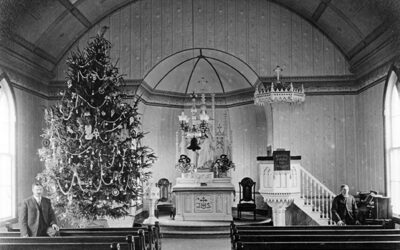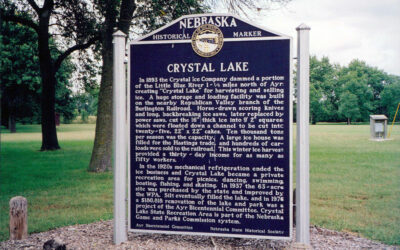When the Russians visited the tractor testing laboratory on the campus of the College of Agriculture, they not only were visiting the most famous facility of this kind in the world but were given an opportunity to study an important aspect of the technological transformation that has made the United States the great food producing area it is today.
The transformation to mechanized farming began on an ever-increasing scale in the years just following the Civil War. Hence, Nebraska’s agriculture has developed almost entirely during this period of mechanization and indeed has been made possible by it. One of the most important and significant instruments of that mechanization has been the tractor. The adoption of the tractor on a large scale has come largely since World War I.
In 1918, there were 4,746 tractors in the state. By 1920, the number had increased to 8,888; by 1930, to 38,524; and by 1950, to 127,154. Thus, in thirty years, the tractor developed from an experimental gadget used by a few farmers to the point where there were approximately 20,000 more tractors in the state than there were farms.
The gasoline tractor was preceded by the traction steam engine. This was useful, however, only for large operations such as threshing or the drawing of large gang disks and plows on bonanza farms. It was not suited to general farm operations.
Initially, the tractor industry was hard up to find a tractor suitable for general all purpose farm work. The large tractors used in the wheat growing region were not satisfactory in the eastern part of the state. When the Fordson tractor appeared in 1919, the machine became much more popular although experience proved that the Fordson was not powerful enough for certain kinds of farm work and was unsuited for other types of work. The great need was the development of a relatively small, yet powerful all purpose tractor, and with this development in the thirties and its refinement in the forties and fifties, the tractor became an indispensable adjunct to the business of farming.
Initially, Nebraska’s farmers conceived of the tractor as something to supplement their horsepower. Also, many farmers tried to use equipment designed for horses with their tractors. They came to find that the tractor was not only a supplement to horsepower but was a substitute for it. Also, they soon learned that it was necessary to purchase equipment such as plows and disks especially designed for a tractor if satisfactory results were to be expected.
The tractor was a major factor in making possible the increased acreage one man could handle and is a major factor in the increase in the size of Nebraska’s farms and the reduction in the number of farms. The most spectacular casualty of the tractor, of course, was Old Dobbin. He began to decline in importance with the appearance of the tractor, and today there are fewer horses on Nebraska’s farms than there are tractors.



